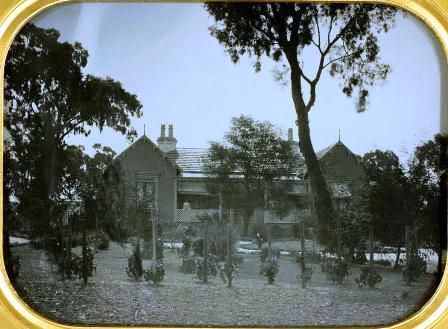Inbox and Environment News Issue 289
November 13 - 19, 2016: Issue 289
80 Black Swans Return To Narrabeen Lagoon
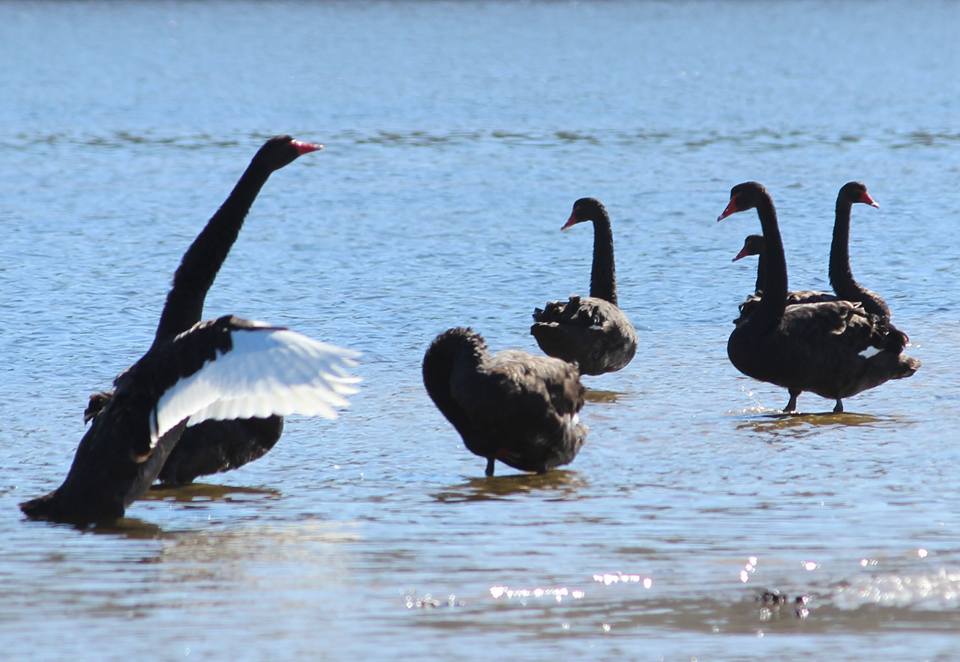
Photo courtesy Friends of Narrabeen Lagoon Catchment

Hoverfly Feasting On Nectar At Palm Beach
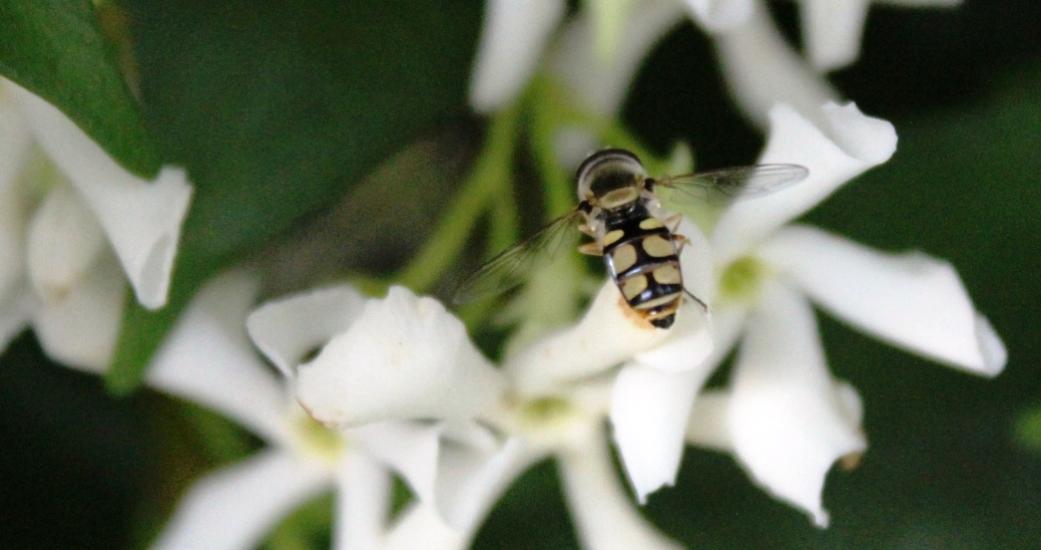 Hoverflies, sometimes called flower flies, or syrphid flies, make up the insect family Syrphidae. As their common name suggests, they are often seen hovering or nectaring at flowers; the adults of many species feed mainly on nectar and pollen, while the larvae (maggots) eat a wide range of foods. In some species, the larvae are saprotrophs, eating decaying plant and animal matter in the soil or in ponds and streams. In other species, the larvae are insectivores and prey on aphids, thrips, and other plant-sucking insects.
Hoverflies, sometimes called flower flies, or syrphid flies, make up the insect family Syrphidae. As their common name suggests, they are often seen hovering or nectaring at flowers; the adults of many species feed mainly on nectar and pollen, while the larvae (maggots) eat a wide range of foods. In some species, the larvae are saprotrophs, eating decaying plant and animal matter in the soil or in ponds and streams. In other species, the larvae are insectivores and prey on aphids, thrips, and other plant-sucking insects.
Aphids alone cause tens of millions of dollars of damage to crops worldwide every year; because of this, aphid-eating hoverflies are being recognized as important natural enemies of pests, and potential agents for use in biological control. Some adult syrphid flies are important pollinators of flowering plants in a variety of ecosystems worldwide.
About 6,000 species in 200 genera have been described. Hoverflies are common throughout the world and can be found on all continents except Antarctica. Hoverflies are harmless to most other animals, despite their mimicry of more dangerous wasps and bees to ward off predators.

Tumbledown Dick Hill: Ingleside - 1951
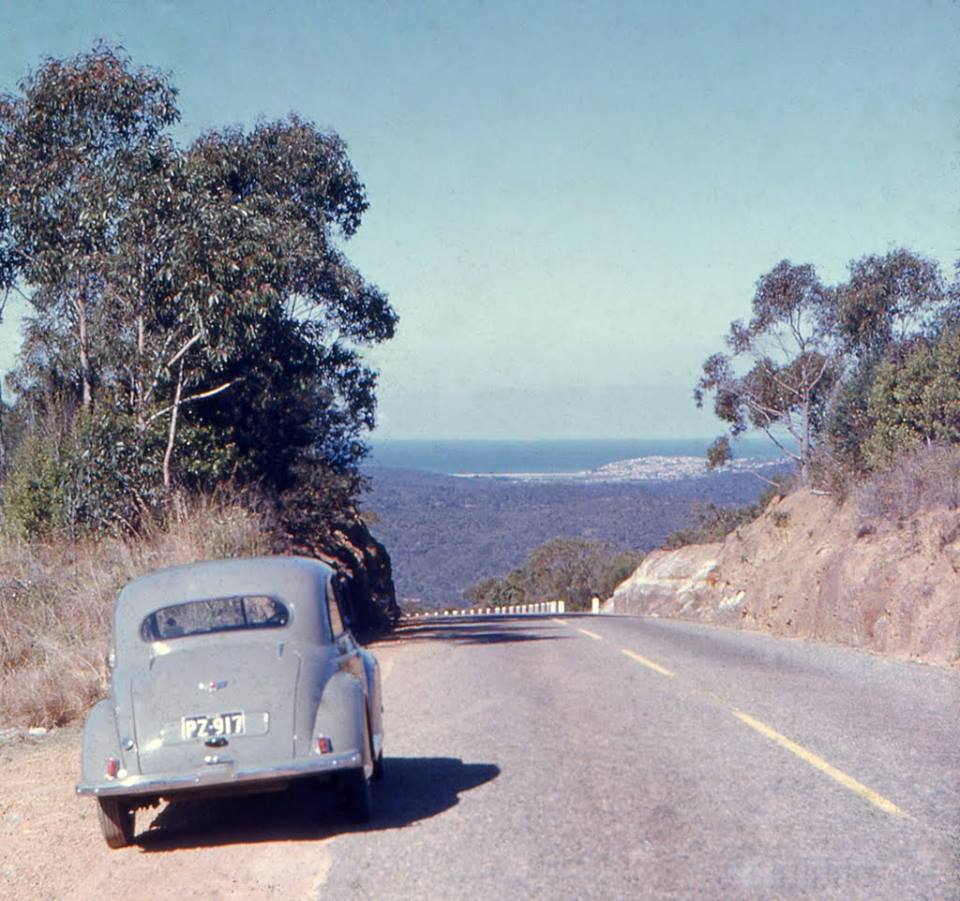
Roadside stop in 1951 in colour from what were then practically the rural outskirts of Sydney. Source: heavylambs panoramia
Some state the hill's name came from the name of either a horse or some other four legged wonder who kept falling down the hill!
In research we've done horses did have problems getting down this hill during the 1800's and early 1900's and were even cautioned once the track became a dirt road that was then tarred.

A Few Other Insights
A LITTLE KNOWN BEAUTY SPOT
About midway between Gordon and Rocklily the road winds up the side of a high mountain, locally known as 'Tumbledown Dick,' the views from every bend, being superb. Here would be the place for a fine, up-to-date residential hotel, which would be convenient to the city, would be surrounded by charming scenery, and whose inmates would derive the benefit to be obtained from the pure mountain air, without undergoing the preliminary toil and fatigue of a long railway journey. A few hundred pounds spent on the road would, enable a swift motor-car service to be initiated between this locality and Manly, Narrabeen, or Rocklily, and irrespective of the future, when, without doubt, accommodation houses will be built along this route, the whole extent of the road from Gordon to its terminus at Rocklily or Narrabeen would make an ideal tourist route, and amply justify the money spent in making the road fit for traffic. As to the name of this mountain, 'Tumble-down Dick,' it is high time that such nomenclature of beauty spots should be done away with, and as a suggestion the writer would offer the name of 'Mount Cook,' or 'Cook's Plateau,' as a tribute to the great navigator, whose eyes no doubt rested upon this elevated spot in his memorable passage up the coast in the year 1770. The whole of this region to the west is practically unexplored, a greater part of it being bounded by the area known as the Kuring-gai Chase, and it only awaits development, in the shape of good roads, to make of it a desirable place, where the city merchant could establish his country home, and though almost in touch with the metropolis find himself surrounded by all that is health-giving and enchanting in Nature. A LITTLE KNOWN BEAUTY SPOT. (1909, May 19). The Sydney Mail and New South Wales Advertiser (NSW : 1871 - 1912), p. 22. Retrieved from http://nla.gov.au/nla.news-article164292811
"TUMBLEDOWN DICK"This nickname was borne by Richard Cromwell, second Protector of England, who died in 1712. Son of Oliver Cromwell, he reigned for only nine months after his father's death.He had led a gay youth, loved field sports, and even drunk King Charles' health with Cavaliers, but when the Army made him leave Whitehall he said to adherents, 'I will not have a drop of blood spilt in the preservation of my greatness, which is a burden to me," and went unresistingly into oblivion, taking with him an old hair trunk of documents. He was £29,000 to debt, due partly to his father's funeral, and he had been in great danger of arrest, but, prudently “Shut himself up in his cabinet" and went to France, where he lived in retirement as John Clarke, reading and painting landscapes."TUMBLEDOWN DICK" (1942, October 28). The Armidale Express and New England General Advertiser (NSW : 1856 - 1861; 1863 - 1889; 1891 - 1954), , p. 2. Retrieved from http://nla.gov.au/nla.news-article193188654
TUMBLEDOWN DICK.Old witch flying on a kitchen chair,Cat on her shoulder, tail In the airMan in the moon goes shivery all over.Calls to his little dog, "At them, Rover!"Cat starts mialling,Dog bow-wowing,Moon gets terrified and tips right over;Man comes tumbling down into a motor."Hey!" says the taxi-man, "where shall I go ter?""Take me to Norwich,They've hot pease-porridge,That's what I want, for I'm shivery all over;I can't find my way there without little Rover!"L. H. ALLEN.TUMBLEDOWN DICK. (1926, May 29). The Sydney Morning Herald (NSW : 1842 - 1954), , p. 11. Retrieved from http://nla.gov.au/nla.news-article16295334
TRAINING CAMP FOR BOY SCOUT OFFICERS. APPROACH TO THE CAMP, BETWEEN PYMBLE AND NARRABEEN, TO BE OPENED BY THE GOVERNOR-GENERAL ON MARCH 7.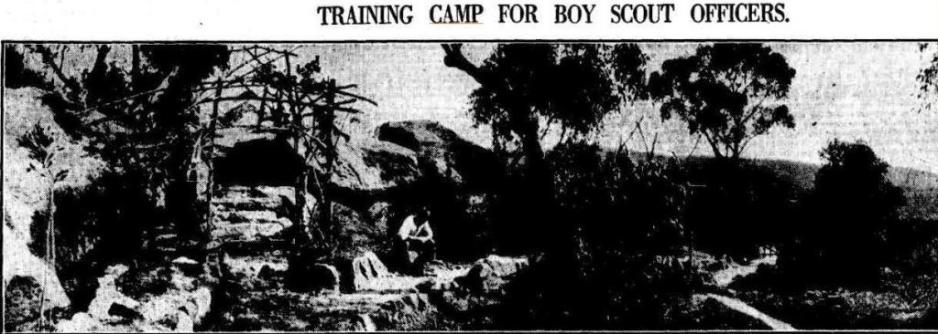
This beautiful stretch of country is the gift of Mr. V. Roinel and Mr. and Mrs. Danvers Power, to the Boy Scout movement of New South Wales, for a training camp for officers and rovers, similar to the well known establishment at Gillwell Park in England. The cleared space In the picture indicates the site of the actual camp itself. The estate, which is now the splendid domain of the Boy Scout movement, is known as Korman Hurst, and is at the foot of Tumbledown Dick Hill, between Pymble and Narrabeen. Mr. Kelso King has provided the funds for fitting out the camp, which will be opened on March 7 by the Governor-General (Lord Forster). The estate, eminently fitted, li. is considered, for tho work of the movement, includes three structures, one of which a three-roomed cottage will be used as a clubroom and library. The two other buildings will be used for Red Cross purposes and for stores and offices. An Honourable Charge has been Issued by the Chief Scout (Major-Gcneral Sir Robert Baden-Powell) to Mr. Hartley MacAlllster, Deputy Commissioner, authorising him to act as a Deputy Camp Chief at the now camp. Accompanying this document were the little badge beads of office.TRAINING CAMP FOR BOY SCOUT OFFICERS. (1925, January 17). The Sydney Morning Herald (NSW : 1842 - 1954), p. 13. Retrieved fromhttp://nla.gov.au/nla.news-article16187662
TUMBLEDOWN DICK RESERVE.
The NRMA recently approached the Lands Department with a suggestion that two areas on Tumbledown Dick Hill on the road between St Ives and Mona Vale, French's Forest be acquired as public reserves The Department has advised the association that the site on the southern side of the road is on freehold land, and it considers that the entailed resumption would not be warranted Regarding the area on the northern side however a comprehensive design for future disposal of a large area of Crown land in this locallty is, being prepared and an appropriate area will be set aside for public recreation when the scheme is finalised. TUMBLEDOWN DICK RESERVE. (1939, April 25). The Sydney Morning Herald (NSW : 1842 - 1954), , p. 3. Retrieved from http://nla.gov.au/nla.news-article17592512

Search For ET Underway With CSIRO'S Parkes Radio Telescope
8 November, 2016: CSIROBreakthrough Listen, the 10-year, $100-million astronomical search for intelligent life beyond Earth launched in 2015 by Internet entrepreneur Yuri Milner and Stephen Hawking today announced its first observations using CSIRO's Parkes radio telescope.
Parkes has joined two US telescopes, the Green Bank Telescope in West Virginia and the Automated Planet Finder at Lick Observatory in California, in their ongoing surveys to determine whether civilisations exist elsewhere and have developed technologies similar to our own.
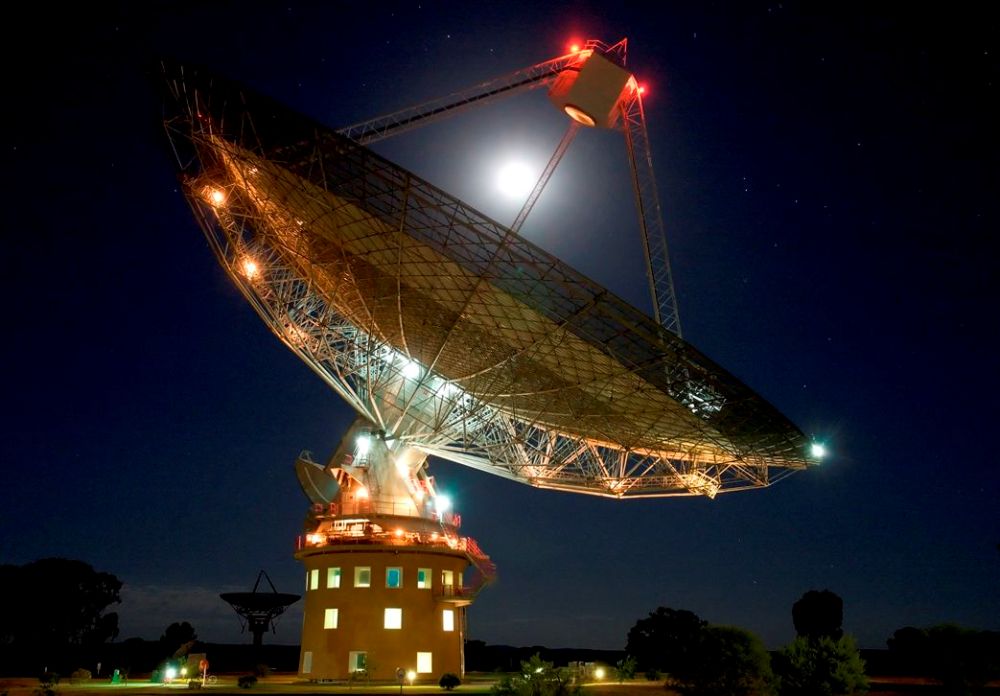
Image: Parkes radio telescope (Photo: Shaun Amy)
Yuri Milner, founder of the Breakthrough Initiatives which include Breakthrough Listen, said the addition of Parkes was an important milestone.
"These major instruments are the ears of planet Earth, and now they are listening for signs of other civilisations," Mr Milner said.
After 14 days of commissioning and test observations, 'first light' for Breakthrough Listen at Parkes was achieved this morning (8 November (local time)) with an observation of the newly-discovered Earth-size planet orbiting the nearest star to our Sun, Proxima Centauri.
A red dwarf star 4.3 light years from Earth, Proxima Centauri is known to have a planet ('Proxima b') orbiting within its habitable zone, the region where water could exist in liquid form on the planet's surface.
Such 'exo-Earths' are among the primary targets for Breakthrough Listen.
Dr Andrew Siemion, Director of Berkeley SETI Research Center and leader of the Breakthrough Listen science program, said the chances of any particular planet hosting intelligent life-forms are probably minuscule.
"But once we knew there was a planet right next door, we had to ask the question, and it was a fitting first observation for Parkes," Dr Siemion said.
"To find a civilisation just 4.2 light years away would change everything."
CSIRO's Parkes radio telescope is perfectly positioned to observe parts of the sky that can't be seen from the northern hemisphere, including the centre of our own Milky Way galaxy, large swaths of the Galactic plane, and numerous other galaxies in the nearby Universe.
Dr Douglas Bock, Director of CSIRO Astronomy and Space Science, said the Parkes telescope was one of the most highly cited radio telescopes in the world.
"The Parkes radio telescope has a long list of achievements to its credit, including the discovery of the first 'fast radio burst'," Dr Bock said.
"Its unique view of the southern hemisphere sky and cutting-edge instrumentation means it now also has a great opportunity to contribute to the search for extra-terrestrial life."
Swinburne University of Technology is working closely with University of California, Berkeley, and CSIRO to design and implement a signal-processing and data-storage system for the project that will make the Breakthrough Listen data available to the science community.
Professor Matthew Bailes, ARC Laureate Fellow at the Centre for Astrophysics and Supercomputing at Swinburne University of Technology, and the Breakthrough Listen project's Australian science coordinator, said Breakthrough Listen would do more than just hunt for ET.
"The detection system on Parkes will be simultaneously searching for naturally occurring phenomena such as pulsars and fast radio bursts, which are a large part of Parkes' present work," Dr Bailes said.
"The Australian science community welcomes the opportunity to share the Breakthrough Listen data for other ongoing research projects."
Breakthrough Listen will use 25 per cent of the science time available on the Parkes radio telescope over the next five years.
The Breakthrough Listen science program is directly aligned with CSIRO's strategy to operate world-class national facilities for the use of scientists, to ensure that those facilities are adequately and sustainably funded, and to facilitate the delivery of world-leading science outcomes and impact.Parkes radio telescope.© 2005 Shaun Amy

Native Vegetation Act To Be Repealed, Replaced With New And Fairer System
Wednesday, 9 November 2016: Media Release - Troy GrantDeputy PremierMark SpeakmanMinister for the EnvironmentNiall BlairMinister for Primary IndustriesMinister for Lands and WaterLegislation is now before the NSW Parliament to repeal the Native Vegetation Act 2003 and replace it with a fair, evidence-based and modern system that will improve biodiversity and agricultural productivity in NSW.
Deputy Premier Troy Grant said the introduction of the legislation delivers upon an election commitment to reform biodiversity legislation, and repeal the Native Vegetation Act.
“This landmark reform takes the shackles off farmers so they can continue to put food on our tables while producing better biodiversity outcomes for our environment,” Mr Grant said.
NSW Environment Minister Mark Speakman said the legislation was supported by a record investment of $240 million over five years, plus $70 million per year after that in private land conservation, in addition to $100 million for the Saving Our Species Program.
“These reforms aim to facilitate ecologically sustainable development while better conserving biodiversity across NSW,” Mr Speakman said.
“The reforms include strong environmental safeguards; including strong caps and limits on land clearing, offset requirements, exclusions and a record NSW Government investment in private land conservation.“We’ve committed to this being a balanced, fair and ecologically sustainable package.”
Minister for Primary Industries, Lands and Water Niall Blair said today was historic.
“Farmers should be able to be productive and profitable while still working to improve the environment – these reforms will finally allow them to get on with doing that,” Mr Blair said.
“For two decades Labor’s laws – which began when Bob Carr introduced the notorious ‘SEPP 46’ in 1995 – have hung around the neck of our farming sector and have failed everyone, with biodiversity decline in NSW accelerating.
“This legislation will finally rid regional NSW of the inequitable and unbalanced Native Vegetation Act, and will replace it with a reform package that restores fairness for farmers.”
The reform package implements the 43 recommendations of the Independent Biodiversity Legislation Review, which the NSW Government commissioned in 2014, and its introduction to Parliament follows an extensive eight-week public consultation period earlier this year.
The Biodiversity Conservation Bill 2016 and Local Land Services Amendment Bill 2016 are intended to commence in 2017. For more information, visit landmanagement.nsw.gov.au
Crown Land Management Bill 2016
Type: GovernmentStatus: Awaiting Assent, Wed 9 Nov 2016Bills Remarks: LC: Bill committed and passed the Council with amendments 9/11/2016 amOrigin: Legislative CouncilMember with Carriage: Blair, Niall (Roberts, Anthony)Long Title: An Act to make provision for the ownership, use and management of the Crown land of New South Wales; to repeal certain legislation consequentially; and for other purposes.
ProgressLegislative CouncilInitially introduced in the Legislative CouncilIntroduced by: Blair, NiallNotice of Motion: Tue 18 Oct 2016Introduced: Wed 19 Oct 2016First Reading: Wed 19 Oct 20162R Speech: Wed 19 Oct 2016Second Reading: Tue 8 Nov 2016Date Committed: Wed 9 Nov 2016Reported with amdts: Wed 9 Nov 2016Report Adopted: Wed 9 Nov 2016Third Reading: Wed 9 Nov 2016Date Passed with amdts: Wed 9 Nov 2016Sent to LA for Concurrence: Wed 9 Nov 2016Legislative AssemblyMember with Carriage: Roberts, AnthonyIntroduced: Wed 9 Nov 2016First Reading: Wed 9 Nov 20162R Speech: Wed 9 Nov 2016Second Reading: Wed 9 Nov 2016Considered in Detail: Wed 9 Nov 2016Third Reading: Wed 9 Nov 2016Passed Parliament: Wed 9 Nov 2016
Legislative Council Bill digestSee Legislation Review Digest No.17 of 2016 for an examination of this Bill by the Legislation Review Committee.:
Commencement by proclamationThe Committee generally prefers legislation to commence on assent or a fixed date. However, as outlined in the explanatory note to this Bill, this Bill is the first stage in a process of creating a new legislative regime for Crown land in New South Wales. The second stage will be further legislation introduced in 2017 which will make consequential amendments and further repeals if necessary. Given the staged approach to the new legislative regime, the Committee considers flexibility as to the commencement date for this Bill is desirable. The Committee makes no further comment.
Biodiversity Conservation Bill 2016
Type: GovernmentStatus: In Legislative Council, 2R, Debate adjourned 5 calendar days, Wed 9 Nov 2016Bills Remarks: LC: Bill and cognate declared urgent 9/11/2016Origin: Legislative CouncilMember with Carriage: Blair, NiallLong Title: An Act relating to the conservation of biodiversity; and to repeal the Threatened Species Conservation Act 1995, the Nature Conservation Trust Act 2001 and the animal and plant provisions of the National Parks and Wildlife Act 1974.Bill is cognate: MainThe following Bills are cognate with this Bill: Local Land Services Amendment Bill 2016
ProgressLegislative CouncilInitially introduced in the Legislative CouncilIntroduced by: Blair, NiallNotice of Motion: Tue 8 Nov 2016Introduced: Wed 9 Nov 2016First Reading: Wed 9 Nov 20162R Speech: Wed 9 Nov 2016
Local Land Services Amendment Bill 2016
Long Title: An Act to repeal the Native Vegetation Act 2003; and to amend the Local Land Services Act 2013 in relation to native vegetation land management in rural areas.Bills Remarks: LC: Bill and main cognate bill declared urgent 9/11/2016Status: In Legislative Council, 2R, Debate adjourned 5 calendar days, Wed 9 Nov 2016Legislative CouncilInitially introduced in the Legislative CouncilIntroduced by: Blair, NiallNotice of Motion: Tue 8 Nov 2016Introduced: Wed 9 Nov 2016First Reading: Wed 9 Nov 20162R Speech: Wed 9 Nov 2016
Wilpinjong Coal Mine Conditions Considered Community Feedback
07.11.2016: Departmental Media Release - Department of Planning and EnvironmentThe Department of Planning and Environment took into account extensive community feedback on an application for a mine extension near Mudgee before referring its preliminary assessment report to the independent Planning Assessment Commission (the Commission) for review. In assessing the application to extend mining operations at the Wilpinjong Coal Mine, the Department has included a number of draft conditions that are in response to the community feedback of more than 700 submissions. Peabody Energy, that owns the mine, proposes to construct a new open cut pit, expand a number of its existing open cut pits, extend the completion date of the project by seven years to 2033, and increase the coal production rate from 12.6 million tonnes per year to 13 million tonnes per year. The Department’s preliminary assessment has found the project is approvable if it is subject to strict conditions including noise, blasting and air quality limits; voluntary acquisition rights for a small number of residents; thorough groundwater and surface water monitoring; and a substantial area to be set aside for conservation. The preliminary assessment report will now be sent to the Commission for review and public hearings. “Of the 752 submissions we received, 27 were from the local community. We understand there’s significant interest in the mine extension and the draft conditions responding to issues raised have now been forwarded to the Commission,” a Department spokesperson said. “In addition, the proposal would secure ongoing employment for the current workforce of 550 people, many who live locally, and generate another 75 new jobs. This type of job security for regional areas is important when weighing up the economic, social and environmental factors for applications of this kind.” The Department spokesperson added that Peabody would also be required to contribute around $300,000 a year to the Mid-Western Regional Council for local services and infrastructure and $660,000 towards a breeding program for the endangered Regent Honeyeater bird.
New Land Clearing Laws Have No Scientific Credibility: Renowned Professor Resigns
November 4, 2016: National Parks Association of NSW The dramatic eleventh hour resignation by Professor Hugh Possingham[1], Australia’s most recognised scientist, has stripped away any pretence of scientific credibility and exposed Mike Baird’s land clearing legislation for what it is: a cash grab by big business and developers. The primary objections of Professor Possingham are that the government is proposing self-assessable codes that will result in broad-scale land clearing, thus degrading soil, water and biodiversity, and that the ‘no net loss’ standard against which clearing should be measured has not made the draft legislation. The Professor states that the Baird government has included elements that are not consistent with the original recommendations made by the review panel—thereby breaking the promise to adopt the recommendations. National Parks Association of NSW CEO, Kevin Evans, said: “as recently as the 20th October, Primary Industry Minister Niall Blair was busily spruiking the scientific credentials of the Baird governments new land clearing laws in the NSW Parliament. “Minister Blair said ‘this Government has a plan to include a scientific response to make sure that farmers in this State are part of the solution’ and referred to ‘the science that we have brought forward to address that issue’ (the issue being biodiversity decline). “Of course, the Minister made these claims despite respected scientific organisations such as the Royal Zoological Society of NSW[2] and the Wentworth Group of Concerned Scientists[3] having condemned the proposed laws on scientific grounds. “Yet despite the weight of scientific expertise opposed to the legislation the Baird Government has pressed on regardless. “At every opportunity they have tried to suggest that the $240 million investment in private land funding would be a magic wand to overcome any increase in clearing that may occur. “The Wentworth Group have previously labelled this money as a subsidy for land clearing. Professor Possingham’s statements confirm that view. “Professor Possingham has just given Mike Baird another National Party-induced headache to go with the many he’s had to cope with recently. “The land clearing codes are nearly identical to those in Queensland and we know what happened there. Land clearing on an epic scale. We also know that this is being driven by radical elements in the National Party that are bossing Mike Baird around on several fronts. “For the wider public it can’t be made much clearer that the new laws have nothing to do with nature conservation and everything to do with opening up land clearing for big agribusiness and developers.” [1]http://www.smh.com.au/environment/scientist-hugh-possingham-quits-over-baird-governments-landclearing-plan-20161103-gsgx9r.html
[2]https://d3n8a8pro7vhmx.cloudfront.net/natureorg/pages/144/attachments/original/1469600810/Royal_Zoological_Society_of_New_South_Wales_.pdf?1469600810
[3]https://d3n8a8pro7vhmx.cloudfront.net/natureorg/pages/144/attachments/original/1469600817/Wentworth-Group-Submission-on-draft-Biodiversity-Conservation-Bill.pdf?1469600817
National Parks Association of NSW is a non-government conservation group that seeks to protect, connect and restore the integrity and diversity of natural systems in NSW and beyond, through national parks, marine sanctuaries and other means.
A Plastic Ocean – Film Screening Avalon
 Thursday, November 17 at 7 PM - 10 PM
Thursday, November 17 at 7 PM - 10 PM
Avalon Bowlo1 Bowling Green Lane, Avalon.$15.00 Tickets at HERE
A Plastic Ocean is a new feature-length adventure documentary that brings to light the consequences of our global disposable lifestyle. We thought we could use plastic once and throw it away with negligible impact to humans and animals. That turns out to be untrue.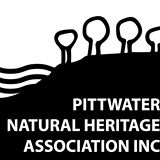
SUNDAY MORNING BIRDWATCHING with PNHA
Would you like to know more about our local birds and explore our bushland reserves? Then join us on one of our bird walks:
Our last walk of the year is at 7.30am on Sunday 27 November at Warriewood Wetlands. The summer migratory species will have arrived and the Wetlands will be home to nesting birds and birds with young. there should be plenty to see.Meet at Katoa Close, North Narrabeen.
Most walks last a couple of hours. Bring binoculars and morning tea for afterwards if you like. Contact pnhabirdwatching@gmail.com for details of each walk.
Permaculture Northern Beaches Events
 Thursday, November 17 at 7 PM - 10 PM
Thursday, November 17 at 7 PM - 10 PM
SUNDAY MORNING BIRDWATCHING with PNHA
Would you like to know more about our local birds and explore our bushland reserves? Then join us on one of our bird walks:
Our last walk of the year is at 7.30am on Sunday 27 November at Warriewood Wetlands. The summer migratory species will have arrived and the Wetlands will be home to nesting birds and birds with young. there should be plenty to see.Meet at Katoa Close, North Narrabeen.
Most walks last a couple of hours. Bring binoculars and morning tea for afterwards if you like. Contact pnhabirdwatching@gmail.com for details of each walk.
Native Bee Workshop
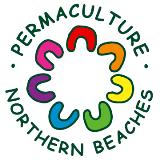 On: November 20, 2016Go to the Permaculture Northern Beaches workshop and learn about the amazing little Australian Native Bee. Learn about our different types of Native Bees and the vital work they do in pollinating plants in our gardens. Learn how to take care of them, how to split the hive each year, and see the honey they produce. This will be a great workshop! Trainer: Gavin Smith, local native bee expert.
On: November 20, 2016Go to the Permaculture Northern Beaches workshop and learn about the amazing little Australian Native Bee. Learn about our different types of Native Bees and the vital work they do in pollinating plants in our gardens. Learn how to take care of them, how to split the hive each year, and see the honey they produce. This will be a great workshop! Trainer: Gavin Smith, local native bee expert.
Book early: Maximum 30 people
The workshop will run from 10am to 1pm and cost $25 per person to be paid in cash on the day (PNB members $20).
For more information, visit: ecohouseandgarden.com.au or email Kimbriki@kimbriki.com or call Kimbriki Resource Recovery Centre on 9486 3512.
SPECIAL EVENT WITH AUSTRALIA'S LEADING EXPERTS IN SEED SAVING JUDE AND MICHEL FANTONand MC - WENDY HARMER Thursday November 24 at 7pm at Dee Why RSL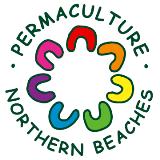 Seeds provide much of the nutritional value that humans need and seed plants are the foundation of human diets across the world, yet the industrial food chain continues to control and direct the food we have access to and this is reflected in what is being served in dining rooms across this country every night. Meanwhile there is environmental destruction, social upheaval and land grabs on a massive scale and we have become content with paying a premium to consume food like substances that are bad for our bodies.
Seeds provide much of the nutritional value that humans need and seed plants are the foundation of human diets across the world, yet the industrial food chain continues to control and direct the food we have access to and this is reflected in what is being served in dining rooms across this country every night. Meanwhile there is environmental destruction, social upheaval and land grabs on a massive scale and we have become content with paying a premium to consume food like substances that are bad for our bodies.
Save Our Seeds is a social impact and environmental event hosted by Permaculture Northern Beaches, and Kimbriki. This event will answer some serious and fundamental questions around the importance of the humble seed to food security and biodiversity.
Australia's leading seed experts Michel and Jude Fanton founded The Seed Savers’ Network in Australia in 1986 which quickly attracted national attention, www.seedsavers.net They now manage over 100 local seed networks in Australia, have initiated seed saving in 44 countries, and assisted setting up 35 food biodiversity projects. They bring the message of the need to conserve traditional varieties of food plants to Sydney for this one only event.
The night's MC is radio broadcaster, author and local legend - Wendy Harmer.
If you are interested in learning about easy and practical ways of saving and sprouting seeds or connecting with other like minded individuals and organizations then this is a must see event. There will also be seed giveaways and raffle prizes. Numbers are limited and bookings are essential. Reserve your place using the link below:
ENTRY BY DONATION - 7PM AT DEE WHY RSL Showroom at 932 Pittwater Road, Dee Why.
 On: November 20, 2016
On: November 20, 2016 Seeds provide much of the nutritional value that humans need and seed plants are the foundation of human diets across the world, yet the industrial food chain continues to control and direct the food we have access to and this is reflected in what is being served in dining rooms across this country every night. Meanwhile there is environmental destruction, social upheaval and land grabs on a massive scale and we have become content with paying a premium to consume food like substances that are bad for our bodies.
Seeds provide much of the nutritional value that humans need and seed plants are the foundation of human diets across the world, yet the industrial food chain continues to control and direct the food we have access to and this is reflected in what is being served in dining rooms across this country every night. Meanwhile there is environmental destruction, social upheaval and land grabs on a massive scale and we have become content with paying a premium to consume food like substances that are bad for our bodies.Community Groups Announce Boycott Of “Meaningless Sham” Public Hearing For Wilpinjong Coal Mine
Published: November 07, 2016 - Lock the Gate AllianceAn Alliance of community groups has announced it will boycott the public hearing of the Planning Assessment Commission review into the Wilpinjong Extension coal project, calling the event a “meaningless sham set up to deny the public our legal right to challenge mine approvals in court.”
The Hunter Central Rivers Alliance includes 43 community groups from across the region, concerned with the impacts of coal and gas mining. The Alliance wrote to Minister Stokes in September urging him not to extinguish legal appeal rights of local communities impacted by inappropriate coal mine proposals.
Today, the Minister has announced a public hearing will be held into the Wilpinjong mine expansion which means community of Wollar, which will be wiped off the map by the project, will lose their legal right of appeal.The Department’s Assessment Report, released today, admits that over the last ten years the Wilpinjong coal mine has been responsible for the decimation of the village of Wollar, and that affected the viability of a range of community services, including the local Rural Fire Service, but proposes the expansion go ahead anyway because the damage cannot now be reversed.
“We will boycott this ridiculous charade of public consultation they call a public hearing,” said Steve Phillips, convenor of the Hunter Central Rivers Alliance, “and we'll organise a protest event in Mudgee and Sydney for the affected community and their supporters to come to instead.”
“We're tired of lending legitimacy to a process that's deaf to the suffering that coal mining is inflicting on NSW communities, that's essentially a box-checking exercise along the mine approval time line. We're disgusted that this government keeps handing out coal mining approvals while cynically taking away the public’s right to challenge the merits of bad decisions in a court of law,” said Phillips.
Under NSW law, when the Planning Assessment Commission holds a “public hearing” as part of a review of a proposed coal mine, the public loses third-party merits-appeal rights - the right to challenge the merits of a subsequent mine approval in the Land and Environment Court. This kind of “merits appeal” is what the community of Bulga used to overturn the 2012 approval of Rio Tinto's Warkworth coal mine expansion, and it allows for the robust and unbiased review of the supposed merits of a coal project in court.
A “public hearing” provides no such robust review and intensifies conflict and division, allowing for no debate, discussion, or interrogation of claims and counter-claims, and no opportunity to resolve issues or establish middle ground.
“The Department’s report has admitted that the Wilpinjong coal mine has had profound effects on my community at Wollar and that this expansion is the death warrant for what remains of the village and surrounding community. We have lost faith in the ability of the public hearing process to protect us and prevent this mine from wiping us out,” said Bev Smiles, of Wollar.
“We need our legal rights restored. We don't need another PAC public hearing circus, where our objections can be raised but are never responded to.
“The loss of our legal merits-appeal rights is one of the most unfair and egregious failings of this government's approach to coal mine approvals. It is imperative that these rights are restored for the Bylong and Wilpinjong projects,” said Smiles.
The Assessment report and referral to the PAC are available here: http://majorprojects.planning.nsw.gov.au/index.pl?action=view_job&job_id=6764#
The community groups’ letter announcing the intended boycott is here
__________________________
Background- For almost 40 years the Land and Environment Court’s jurisdiction has included merits review in planning and other matters.
- However, under existing legislation these appeal rights are extinguished if, before consent is granted, the Planning Assessment Commission holds a public hearing into the matter, this being done at the request of the Minister (or Secretary of the Department) on a case by case basis
- Some 38 matters have gone to a PAC public hearing at the request of the Minister (or Secretary) since the inception of the PAC in 2008, of which 29 have been for resource projects.
- Merits review provides an opportunity for fulsome public participation in large-scale projects across NSW. This is important in itself but also acts as a key check and balance in the system. As the Independent Commission Against Corruption (ICAC) has noted: “Community participation… act[s] as a counter balance to corrupt influences. The erosion of these requirements in the planning system reduces scrutiny of planning decisions and makes it easier to facilitate a corrupt decision.
- The NSW EDO in their ‘Merits Review in Planning in NSW’ report, found that, “the consistency, quality, fairness and accountability of merits review decision-making by the Land and Environment Court results in better environmental and social outcomes and contrasts with poorer outcomes and inferior processes in PAC public hearings.”
- Extinguishment of third party appeals to the Land and Environment Court disempowers disaffected community groups, and deprives the public of the benefit of good decision-making in environmental matters and consequently serves to undermine the integrity of the planning system.
WILPINJONG EXTENSION PROJECTRESPONSE TO SUBMISSIONS - 2.3 Biodiversity (pages 12-13) - May 2016 by Peabody EnergyMunghorn Gap Nature Reserve BufferIssueThe OEH recommends that a buffer of at least 50 m is maintained between any open cut mining operations or infrastructure and the adjacent Munghorn Gap Nature Reserve. ResponseWCPL note that the Guidelines for Developments Adjoining Land Managed by the Office of Environment and Heritage (OEH, 2013) state:Given the differences between sites and development types, it is not possible to specify a standard buffer; each development will need to be assessed on its merits. Developments that are designed to besympathetic to adjoining lands, and to integrate with the landscape, are likely to require less need for buffers or set-backs.Where there is no buffer, consideration should be given to developing appropriate conditions or land management practices that minimise the potential edge effects from development.
It is noted that a 50 m buffer was accepted as a limit on mining proximity by the proponent of Stage 2 of the Moolarben Coal Project between the open cut mining and the Munghorn Gap Nature Reserve during the life of the project.WCPL has calculated the impact of the NSW government imposing a 50 m proximity limit on the open cut pit extensions for the Project and this indicates that some 350,000 tonnes of run-of-mine (ROM) coal would be sterilised along approximately 2 km of pit if this was to occur. It is noted that WCPL has an obligation to recover economically viable coal reserves within its mining lease.
WCPL does not consider that a nominal 50 m buffer distance from the open cut is warranted for the Project given:• WCPL is not aware of any ecological basis for this nominal buffer that has arisen from previous Moolarben consent condition negotiations.• The approved Wilpinjong Coal Mine does not operate to such a limit, and clearing of vegetation adjoining the reserve would be a short to medium-term impact. The pits would be progressively mined and rehabilitated to minimise the potential short-term edge effects from the Project.• A key objective of the mine rehabilitation in the long-term is to increase the continuity of woodland vegetation by establishing links between woodland vegetation in the rehabilitation areas and existing vegetation in the Munghorn Gap Nature Reserve (i.e. a post-mining improvement inecological connectivity).• The Munghorn Gap Nature Reserve (and Goulburn River National Park) would be extended if the Project is approved (i.e. by incorporation of proposed Project biodiversity offset areas) that would result in a material gain to the reserve system, that would be expected to far outweigh anytemporal impacts along small sections of the reserve boundary associated with mining proximity.Notwithstanding the above, WCPL has considered the OEH recommendation and feedback from the DP&E, and is prepared to accept a setback of some 20 m between the surveyed boundary of theMunghorn Gap Nature Reserve and the limit of the open cut in the Project open cut extension areas.This proposed alternative limit would have a lesser adverse impact on Project open cut mining reserves than a nominal 50 m buffer, and Project development within the 20 m buffer would be limited to access tracks, upslope drainage and other ancillary development activities that are typically located on pit boundaries. _________________________
STATE SIGNIFICANT DEVELOPMENT ASSESSMENT - NSW Government Department of Planning & EnvironmentWilpinjong Extension Project (SSD 6764)Secretary’s Environmental Assessment ReportSection 89E of the Environmental Planning and Assessment Act 1979Biodiversity - Page IVThe project would disturb around 1,000 hectares of land comprising a mixture of woodland and cleared grazing land on the valley floors between the Goulburn River National Park and the Munghorn GapNature Reserve. In total, the project would clear 354 hectares of native woodland vegetation, including 19 hectares of endangered ecological communities and 190 hectares of threatened Regent Honeyeater habitat.The Department is satisfied that WCPL has avoided impacts on biodiversity as far as practicable, and due to the location of the coal resource there are limited opportunities to further avoid these impacts.In accordance with the NSW Biodiversity Offsets Policy for Major Projects, WCPL proposes to compensate for these impacts through a comprehensive biodiversity offset strategy, incorporating:- almost 1,000 hectares of land based offsets adjacent to existing conservation reserves;
- rehabilitation of almost 3,000 hectares of the land disturbed by mining to woodland, targeting
- vegetation communities suitable for the Regent Honeyeater; and
- $660,000 towards the recovery program for the Regent Honeyeater targeting release of captive birds into the wild.
Both the Department and the NSW Office of Environment and Heritage (OEH) consider that the overall offset strategy provides an appropriate balance between land based offsets, maximising the ecological benefits of mine rehabilitation, and targeted contributions towards maintaining populations of critically endangered species.With proper governance, the Department considers that the strategy has the potential to substantially improve biodiversity values and habitat connectivity in the region, particularly by creating substantial habitat corridor between the Munghorn Gap Nature Reserve and Goulburn River National Park.
_________________________
The Munghorn Gap Nature Reserve is a protected nature reserve that is located in the Central Tablelands region of New South Wales, in eastern Australia. The 5,934-hectare (14,660-acre) reserve is situated on the Great Dividing Range, 35 kilometres (22 mi) north-east of Mudgee. It is the second oldest nature reserve in Australia is steeped in Aboriginal heritage. The Castle Rocks walking trail reveals pagoda-like sandstone formations.
Many plants and animals are at their eastern or westernmost points of natural distribution. The reserve is situated at one of the lowest points of the Great Divide. The streams forming from the east reach the Hunter River, and those from the west eventually flow to the Darling River.
The flora of the area is an interesting combination of the moist mountain plants and those of the drier western plains. Vegetation is mostly dominated by Eucalyptus and Callitris pine.
The reserve is particularly noted for the high bird diversity. It lies within the Mudgee-Wollar Important Bird Area, so identified by BirdLife International because of its importance for the endangered regent honeyeater.Munghorn Gap Nature Reserve is a particularly important place for Wiradjuri people.
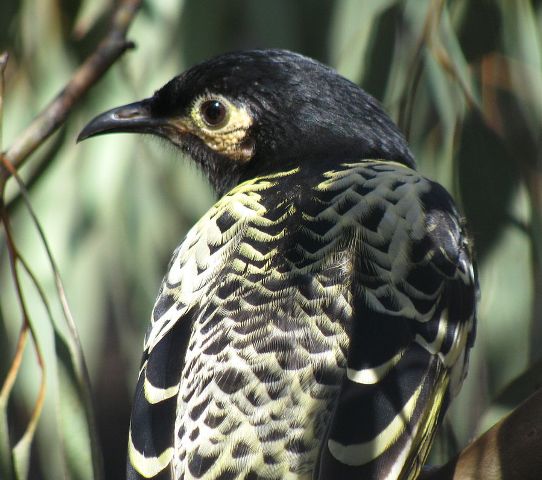
Regent honeyeater - at Adelaide Zoo, photo by Jessica Bonsell
Count of Public Submissions on Wilpinjong Extension Project on NSW Dept. of Planning & Environment website and webapge for abovePublic Feedback 714 Submissions - 96 Support - 618 ObjectGovt, Agency & Org. 41 Submissions - 12 Support - 17 Object - 12 Comments
- For almost 40 years the Land and Environment Court’s jurisdiction has included merits review in planning and other matters.
- However, under existing legislation these appeal rights are extinguished if, before consent is granted, the Planning Assessment Commission holds a public hearing into the matter, this being done at the request of the Minister (or Secretary of the Department) on a case by case basis
- Some 38 matters have gone to a PAC public hearing at the request of the Minister (or Secretary) since the inception of the PAC in 2008, of which 29 have been for resource projects.
- Merits review provides an opportunity for fulsome public participation in large-scale projects across NSW. This is important in itself but also acts as a key check and balance in the system. As the Independent Commission Against Corruption (ICAC) has noted: “Community participation… act[s] as a counter balance to corrupt influences. The erosion of these requirements in the planning system reduces scrutiny of planning decisions and makes it easier to facilitate a corrupt decision.
- The NSW EDO in their ‘Merits Review in Planning in NSW’ report, found that, “the consistency, quality, fairness and accountability of merits review decision-making by the Land and Environment Court results in better environmental and social outcomes and contrasts with poorer outcomes and inferior processes in PAC public hearings.”
- Extinguishment of third party appeals to the Land and Environment Court disempowers disaffected community groups, and deprives the public of the benefit of good decision-making in environmental matters and consequently serves to undermine the integrity of the planning system.
- almost 1,000 hectares of land based offsets adjacent to existing conservation reserves;
- rehabilitation of almost 3,000 hectares of the land disturbed by mining to woodland, targeting
- vegetation communities suitable for the Regent Honeyeater; and
- $660,000 towards the recovery program for the Regent Honeyeater targeting release of captivebirds into the wild.
Friends Of Narrabeen Lagoon Catchment Activities
 November 28, 2016 7pm: ForumThis is a most important forum where the Minister for Planning, Rob Stokes, MP, and the Administrator for Northern Beaches Council, Dick Persson, will each speak about Narrabeen Lagoon State Park and its future.
November 28, 2016 7pm: ForumThis is a most important forum where the Minister for Planning, Rob Stokes, MP, and the Administrator for Northern Beaches Council, Dick Persson, will each speak about Narrabeen Lagoon State Park and its future.
Please make the effort to be there - reply to this email: email@narrabeenlagoon.org.au giving the name/s of people wanting to attend and we will send you your ticket/s.
Enjoy the outdoors with one of these walksTerrey Hills to Deep Creek Sunday 4/12/20163 hr walk starting 8am at Terrey Hills cross the Deep Creekcatchment valley and feeder creek and end in Oxford Falls.See and identify spectacular Sydney sandstone flora. Bring ascrewdriver for 30 min weeding near the end of the walk.Allow 4 hrs. Carpool required. Phone Conny 0432 643 295
Oxford Falls Triangle 15/1/173 hour bushwalk starting 4.00pm from Morgan Rd, OxfordFalls. We identify plants in blossom and on the way home do20 min weeding of Whisky Grass. Please bring a screwdriveras a digging stick. Phone Conny 0432643295
 November 28, 2016 7pm: Forum
November 28, 2016 7pm: ForumMiddle Head Management Plan (Draft Amendment 2)
Date published: 03 November 2016 by Sydney Harbour Federation TrustInvitation for public commentThe Harbour Trust has prepared a Draft Amendment to the Middle Head Management Plan to guide the revitalisation and management of Middle Head – Headland Park, Mosman.
The Draft Amendment to the Management Plan is on public exhibition from 3 November 2016 to 16 December 2016. Comments are invited until 5.00pm AEST, on Friday 16 December 2016.
The Sydney Harbour Federation Trust is asking people for their feedback on the Draft Amendment to its Middle Head Management Plan (Draft Plan), which went on public exhibition today.
Harbour Trust Acting Executive Director Dr Susan Culverston said one of the main aims of the Draft Plan, which is open for public comment from Thursday 3 November to Friday 16 December, was to include more information about coordinated management of the natural environment with the NSW National Parks and Wildlife Service (NPWS).
“We have worked closely with NPWS in the preparation of our Draft Plan. Both agencies want to improve public access to the headland by establishing a connected network of paths.
“Our Draft Plan proposes creating an accessible circuit path around the Harbour Trust’s Middle Head precinct, which will link up with the NPWS walking tracks.
Dr Culverston said that extensive community consultation had played an important role in the preparation of the Draft Plan for Middle Head.
“We were pleased with the very positive response to our joint community consultation activities with over 800 responses to the survey conducted earlier this year.
“We are now looking forward to seeing this strong community engagement with the site and the ideas for its future continue through this public exhibition process.
“We’re also hosting a drop-in session at our office on Thursday 17 November from 1-7pm where you can view our Draft Plan and speak with our planners,” Dr Culverston said.
Please click here for more information about the Draft Amendment how to provide your comments.
EPA Appeals For Information After Hundreds Of Birds Poisoned On The Central Coast
Media release: 2 November 2016The NSW Environment Protection Authority (EPA) is actively continuing its investigation into the poisoning of hundreds of birds on the Central Coast and is appealing to the public to come forward with any information that may help catch the culprit.
EPA Acting Director Hunter, Ms Karen Marler said the EPA now has reports of over 250 birds, including magpies, peewees, butcher birds, currwongs and corellas, and two dogs being poisoned.
“Our latest reports of bird deaths have been primarily magpies in the Woongarrah area in mid- October. The two dogs were also impacted when they ate meat baited with the poison at Woongarrah.
“Testing indicates the birds and dogs have been poisoned with the same pesticide, fenamiphos. This pesticide is not readily available to the public.
“Meat laced with the poison has been tossed onto the ground for animals to ingest. It is very distressing that anyone could be so malicious, to harm native wildlife and also endanger pets in this way.
“The misuse of pesticides is an offence in NSW and heavy penalties apply, including fines up to $120,000.
“The EPA has received a number of leads and we thank those people who have come forward with information. We have not yet been able to identify the person responsible.
“We are again appealing for people to come forward with any information which may assist. We are particularly interested in hearing from the owner of the dark coloured Ford Ranger ute seen in the vicinity of Highberry Street, Woongarrah on Saturday 24 September to assist with our enquiries.”
If anyone has any information that may assist the EPA please contact our Environment Line on 131555.
EPA Pilot Program Calls For Increased Use Of Construction And Demolition Waste
Media release: 1 November 2016- EPAThe NSW Environment Protection Authority (EPA) is searching for organisations that can find new ways to make use of someone else’s construction and demolition waste.
Local councils and private businesses are invited to apply for grants under a new program, the Civil Construction Market Pilot program, which works as a “matchmaker” service where waste from one project can be safely used to benefit another project.
Examples to date include pallets being made into chook bedding and timber offcuts being used to produce eco-friendly particleboard by another manufacturer.
The new Civil Construction Market Pilot program has the important goal of landfill diversion but focuses on construction and demolition (C&D) waste, with grants available to assist consultants, contractors, waste service providers and local government personnel find opportunities where construction and demolition waste, a major contributor to landfill, can be effectively used elsewhere.
For example, an EPA funded local council could source crushed concrete, crushed brick and glass fines from construction projects, and opt to recycle this material in the construction of pavements.
EPA Executive Director Waste and Resource Recovery Steve Beaman said the EPA wanted to increase the C&D industry’s take-up of recycling and reuse opportunities.
“Construction and demolition activities account for more than 6.8 million tonnes of waste in NSW each year, and more than a quarter of that is sent to landfill,” Mr Beaman said.
“This pilot program aims to divert at least 12,000 tonnes of construction and demolition waste from landfill each year by matching waste to reuse opportunities.
“The availability of these grants means councils and businesses can be more strategic in their approach to reuse and recycling, and can add landfill diversion into the early planning stages of their projects.”
The Circulate construction and demolition pilot program will run over the 2016-17 financial year across the Sydney metropolitan and regional areas. Project grants range from $20,000 to $75,000.
Applications are open for the Civil Construction Market Pilot Program, under EPA Circulate, until 25 November 2016.
More information on the pilot grant program is available online atwww.epa.nsw.gov.au/wastegrants/circulate-civil-construction-market-program.htm
The EPA will be hosting an information session in Sydney on Monday 14 November at 10am to provide more information about the pilot program and application process. A recording of the session will be available no later than Friday 18 November.
Venue details and link will be provided to those who register their interest via email to industrial.ecology@epa.nsw.gov.au
Annual Reports - Department Of The Environment + Sydney Harbour Federation Trust
Draft National Strategy For Mitigating Vessel Strike Of Marine Mega-Fauna
October 27, 2016: Dept. of Environment & Energy - Australian Government
Public consultation — submissions close 5.00pm AEST Friday 9 December 2016
The Australian Government Department of the Environment and Energy is releasing the draft ‘National Strategy for Mitigating Vessel Strike of Marine Mega-fauna’ for public comment.
How to make a submissionIf you would like to provide comment or input in response to the draft national stategy:
1. Complete a submission cover sheetYou must provide a completed cover sheet with your comments:Submission cover sheet (DOCX - 77.49 KB)
2. Send your submissionComments can be provided in email, word document or PDF Format. Please include the Reference ‘Draft National Strategy for Mitigating Vessel Strike of Marine Mega-fauna’ as a subject heading. You can submit your comments by:
Email to:migratoryspecies@environment.gov.au (preferred option) or
Mail to:Migratory Species SectionWildlife, Heritage and Marine DivisionGPO Box 787Canberra ACT 2601
Please note submissions are due by 5.00pm AEST on Friday 9 December 2016
Watch Out For Baby Whales
Saturday 22 October 2016: Hon. Mark Speakman, Minister for the Environment
With a record number of whales migrating along the NSW coast this year,Environment Minister Mark Speakman is urging whale watchers to keep a safe distance, particularly from mothers with calves.
“The ‘humpback highway’ is playing host to thousands of whales and calves migrating south which has been a delight for spectators right along the coast,” Mr Speakman said.
“But while it is tempting to motor, swim or paddle close to these incredible animals it is important that people behave in a safe manner and give them space.”
Mr Speakman said vessels including kayaks, surf skis and surfboards were required to remain 100m from a whale, or 300m if a calf was present.Unmanned aerial drones were required to stay more than 300m away from marine mammals.
“These regulations are in place to protect both the wellbeing of the animals and the safety of whale watchers,” he said.
“There are plenty of safe ways to view the whale migration. NSW’s headlands have some of the best land-based whale watching spots in the world.”
Top NSW whale watching sites include:- Cape Byron Lighthouse
- Tomaree Head Summit, Tomaree National Park
- Cape Solander, Kamay Botany Bay National Park
- Jervis Bay National Park
- Ben Boyd National Park near Eden
For up to date whale sightings near you, download the free Wild About Whales app or visit wildaboutwhales.com.au
Whale Watching Season runs May-November.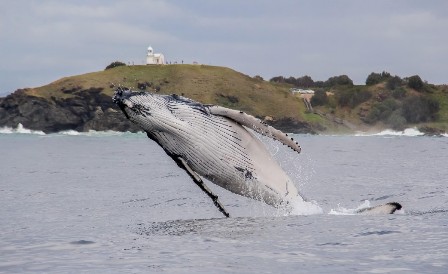
- Cape Byron Lighthouse
- Tomaree Head Summit, Tomaree National Park
- Cape Solander, Kamay Botany Bay National Park
- Jervis Bay National Park
- Ben Boyd National Park near Eden

Australian Farmer Climate Survey
It's time to have your say!As farmers, we are on the front line of rising temperatures and more extreme weather. But for too long, the public - and even our own industry and political representatives - have assumed we aren’t concerned about damage to the climate.
It’s time to set the record straight. Join in with hundreds of farmers across the country and take this 5-minute survey.
Comment Invited On Draft Barwon-Darling Valley Floodplain Management Plan
1 November 2016: NSW Department of Primary IndustriesFloodplain landholders and the general community are being invited to comment on the draft Barwon-Darling Valley Floodplain Management Plan, Director Water Planning and Policy, Alison Kirk, announced today.“The draft Barwon-Darling Valley plan is the third of six floodplain management plans being prepared across the northern valleys in NSW's Murray-Darling Basin,” said Ms Kirk.
“The purpose of the draft Barwon-Darling Valley plan is to coordinate the future development of flood works on the floodplain.”
“The plan is designed to manage the risk to life and property from the effects of flooding and protect and maintain flood connectivity to flood-dependent ecological and cultural features of the floodplain.”
Ms Kirk said the draft plan proposes minimal change for landholders, building on current practices through improved technical knowledge and understanding to achieve a simplified approvals process for new and amended flood works.
“The draft plan outlines the types of flood works that may be considered for approval, standards of flood works, advertising requirements for approvals, as well as where state-wide exemptions apply.”
“To ensure a balanced approach, development of the draft Barwon-Darling Valley plan has been overseen by an Interagency Regional Panel incorporating representatives from DPI, Office of Environment and Heritage and Local Land Services.”
Ms Kirk continued, saying DPI Water is also currently undertaking a process to licence floodplain harvesting through the NSW Healthy Floodplains Project, which is separate from the development of floodplain management plans.
“I would urge all interested people to review the draft Barwon-Darling Valley plan and make comment to ensure that the final plan deals with local issues in a practical way,” Ms Kirk said.
Details of where people can view the draft plan, together with additional information, can be found on Floodplain management plans on exhibition.
Public comment on the draft Barwon-Darling Valley Floodplain Management Plan closes on Friday 9 December 2016.
This project is funded by the Australian Government’s Sustainable Rural Water Use and Infrastructure Program as part of the implementation of the Murray-Darling Basin Plan in NSW.
Mt Kembla's 'New' Koala Population
7 November 2016: NSW Office of Environment and HeritageRecent sightings of koalas at Mount Kembla have renewed hope that Illawarra’s koala population is coming back from the brink.
Koalas are one of the iconic species in the Saving our Species programOffice of Environment and Heritage (OEH) Senior Threatened Species Officer Kylie Madden said eight koala have been spotted over three nights in recent weeks as part of a new survey of the area.
“These findings come just two months after a lone koala was accidently captured on a motion-sensor camera just west of Mount Kembla, in an area where koalas have not been seen for more than 70 years,” Ms Madden said.
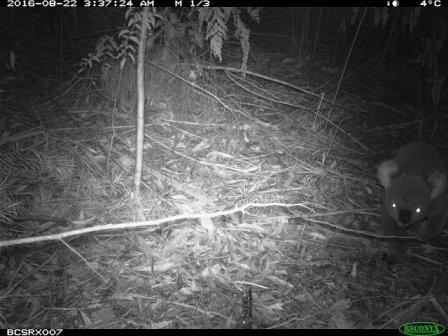
“Following this unexpected sighting OEH started formally surveying Mount Kembla last month.
“Finding eight koalas in such a short period of time is extremely encouraging and as the survey progresses we hope to get a much clearer picture of the size and extent of this koala population.
“The koalas spotted in recent weeks are all adults and four of the eight were heard ‘bellowing’, the noise male koalas make when looking for a female.
“This is an extremely encouraging sign that we may have a breeding population here, something that only a few months ago was not even considered as a possibility.
“Its early days but the survey results suggest these koalas have recolonised Mount Kembla from a population near East Kangaloon approximately 25km away, or from a colony near Campbelltown.
“Young koalas are known to walk up to 50km looking for unoccupied territories.
“Despite there being no records of koalas for decades, these koalas have very much ‘moved back in’, rediscovering a patch of good habitat above the escarpment,” Ms Madden said.
These sightings coincide with reports of a lone koala seen near the base of Macquarie Pass on Sunday 30 October.
This koala was most likely a dispersing male looking for suitable unoccupied habitat.
It’s unlikely there is a koala population extending to the base of Macquarie Pass, but the sighting is further evidence that koalas in the region are expanding in numbers and range.
The Mount Kembla Koala Survey will continue until December 2016. Results will also inform OEH’s Southern Highlands Koala Conservation Project, for more information on the conservation of this iconic species, visit the OEH website.

Flagship Fish Habitat Rehabilitation Grants - Expression Of Interest
NSW Department of Primary IndustriesThe “Flagship Fish Habitat Rehabilitation Grant” program (“Flagship Grants”) is an exciting new funding opportunity for coastal NSW, offering up to $400,000 for individual projects that significantly enhance fish habitat, water quality and fish passage opportunities within the coastal catchments of NSW.
This innovative grant program is funded by the Recreational Fishing Saltwater Trust Expenditure Committee (RFSTEC) and seeks to benefit recreational fishing opportunities by enhancing the habitats that fish need to thrive.
The program builds on the existing Habitat Action Grants and seeks to tackle much larger scale projects that require higher levels of funding assistance.
The Flagship Grants will support a range of actions including hydrological and environmental investigations, community consultation, economic assessments, as well as on-ground works.
Examples of the types of projects supported include:- rehabilitation of significant riparian lands / coastal wetlands (river banks, mangrove forests, saltmarsh), including addressing poor water quality from the disturbance of acid sulfate soils
- environmentally-sensitive bank stabilisation works
- removal or modification of barriers to fish passage including addressing floodgates, road-crossings and construction of fishways
- re-snagging of waterways with timber structures.
Projects can run for up to 3 years, with $400,000 available per year.Applicants will need to complete an Expression of Interest form and submit this by 23rd December 2016.
It is strongly advised that you to contact us to discuss your ideas on one of the numbers provided in the form.
- rehabilitation of significant riparian lands / coastal wetlands (river banks, mangrove forests, saltmarsh), including addressing poor water quality from the disturbance of acid sulfate soils
- environmentally-sensitive bank stabilisation works
- removal or modification of barriers to fish passage including addressing floodgates, road-crossings and construction of fishways
- re-snagging of waterways with timber structures.
Record Hot Year May Be The New Normal By 2025
November 9, 2016: University of New South WalesThe hottest year on record globally in 2015 could be just another average year by 2025 if carbon emissions continue to rise at their current rate, according to new research published in the Bulletin of American Meteorological Society.
And no matter what action we take, human activities had already locked in a "new normal" for global average temperatures that would occur no later than 2040, according to lead author Dr Sophie Lewis, from the Australian National University (ANU) hub of the ARC Centre of Excellence for Climate System Science (ARCCSS).
However, while annual global average temperatures were locked in, it was still possible with immediate and strong action on carbon emissions to prevent record breaking seasons from becoming average -- at least at regional levels.
"If we continue with business-as-usual emissions, extreme seasons will inevitably become the norm within decades and Australia will be the canary in the coal mine that will experience this change first," said Dr Lewis.
"That means the record hot summer of 2013 in Australia -- when we saw temperatures approaching 50°C in parts of Australia, bushfires striking the Blue Mountains in October, major impacts to our health and infrastructure and a summer that was so hot it became known as the "angry summer" -- could be just another average summer season by 2035.
"But if we reduce emissions drastically to the lowest pathway recommended by the Intergovernmental Panel on Climate Change (RCP2.8), then we will never enter a new normal state for extreme seasons at a regional level in the 21st Century ."
The idea of what the term "new normal" actually means was the cornerstone of this new research. It has often been used when talking about climate change but it had seldom been clearly defined. Dr Lewis and colleagues have now developed a scientific definition for the term.
"Based on a specific starting point, we determined a new normal occurred when at least half of the years following a record year were cooler and half warmer. Only then can a new normal state be declared," she said.
After this process was used by the researchers to determine new normal conditions for global average temperatures, it was used again to examine record hot seasonal temperatures at a regional level.
Using the National Computational Infrastructure supercomputer at ANU to run climate models, the researchers explored when new normal states would appear under the Intergovernmental Panel for Climate Change's four emissions pathways.
The research team then examined seasonal temperatures from December to February across Australia, Europe, Asia and North America.
The results revealed that while global average temperatures would inevitably enter a new normal under all emissions scenarios, this wasn't the case at seasonal and regional levels.
"It gives us hope to know that if we act quickly to reduce greenhouse gases, seasonal extremes might never enter a new normal state in the 21st Century at regional levels for the Southern Hemisphere summer and Northern Hemisphere winter," Dr Lewis said.
"But if If we don't act quickly Australia's "angry summer" of 2013 may soon be regarded as mild. Imagine for a moment, if a summer season like 2013 became average. The likely impacts of an extremely hot year in 2035 would beyond anything our society has experienced."
Sophie C. Lewis, Andrew D. King, Sarah E. Perkins-Kirkpatrick. Defining a new normal for extremes in a warming world. Bulletin of the American Meteorological Society, 2016; DOI: 10.1175/BAMS-D-16-0183.1
Untapped Metal Wealth To Be Mined At New Nyngan Project
10.11.2016: Departmental Media Release - Department of Planning and EnvironmentThe Department of Planning and Environment has approved the Nyngan Scandium Mine project in western NSW, with stringent conditions attached, bringing jobs and an untapped resource material to global markets.
EMC Metals now has approval to go ahead with the new mine which will employ 75 people and generate up to $12.4 million for the local economy over the next 21 years. The mine would also need 60 construction workers to get the project up and running.
Scandium is used in the production of transportation parts for aircraft, trains and cars. It can also be used to make parts for a range of manufacturing and technological items.
Director of Resource Assessments from the Department of Planning and Environment, Clay Preshaw, said the proposal was assessed under NSW Government policies and the local community was consulted on the plans.
“The new Nyngan mine proposes to meet a growing global demand for a once overlooked resource material and produce up to 45 tonnes of scandium oxide a year, for 21 years,” Mr Preshaw said.
“In 2015, only 15 tonnes of scandium was traded around the world and the material has previously been considered expensive and hard to come by.
“The new mine will extract a total of 1.5 million tonnes of material from two small open cut pits around 10 hectares in size.
“Mining activity will be limited to specific campaigns and will only occur up to three times in one year. The approved timeframe for these mining campaigns are between three to five weeks.
“Strict conditions have been applied to the mine approval, including requirements for a road intersection upgrade to ensure safe vehicle access to the mine.
“The company must also develop an accommodation strategy to ensure mine employees moving to Nyngan have somewhere to live, minimising impacts on the local housing market.
“As a condition, EMC Metals must contribute $125,000 annually to Bogan Council for local community services and ensure local road upgrades are also completed.”
Consultation with the community is an important part of the planning process and the Department publicly exhibited the proposal for feedback between May and June.
The Department received six submissions from Government agencies during the consultation period. No submissions were received from the public.
Increasing Cost Of Natural Hazards As Climate Changes
November 7, 2016: University of AdelaideA new comprehensive study of Australian natural hazards paints a picture of increasing heatwaves and extreme bushfires as this century progresses, but with much more uncertainty about the future of storms and rainfall.
Published in a special issue of the international journal Climatic Change, the study documents the historical record and projected change of seven natural hazards in Australia: flood; storms (including wind and hail); coastal extremes; drought; heatwave; bushfire; and frost.
"Temperature-related hazards, particularly heatwaves and bushfires, are increasing, and projections show a high level of agreement that we will continue to see these hazards become more extreme into the 21st century," says special issue editor Associate Professor Seth Westra, Head of the Intelligent Water Decisions group at the University of Adelaide.
"Other hazards, particularly those related to storms and rainfall, are more ambiguous. Cyclones are projected to occur less frequently but when they do occur they may well be more intense. In terms of rainfall-induced floods we have conflicting lines of evidence with some analyses pointing to an increase into the future and others pointing to a decrease.
"One thing that became very clear is how much all these hazards are interconnected. For example drought leads to drying out of the land surface, which in turn can lead to increased risk of heat waves and bushfires, while also potentially leading to a decreased risk of flooding."
The importance of interlinkages between climate extremes was also noted in the coastal extremes paper: "On the open coast, rising sea levels are increasing the flooding and erosion of storm-induced high waves and storm surges," says CSIRO's Dr Kathleen McInnes, the lead author of the coastal extremes paper. "However, in estuaries where considerable infrastructure resides, rainfall runoff adds to the complexity of extremes."
This special issue represents a major collaboration of 47 scientists and eleven universities through the Australian Water and Energy Exchange Research Initiative (www.ozewex.org), an Australian research community program. The report's many authors were from the Centre of Excellence for Climate System Science, the CSIRO, Bureau of Meteorology, Australian National University, Curtin University, Monash University, University of Melbourne, University of Western Australia, University of Adelaide, University of Newcastle, University of New South Wales, University of Tasmania, University of Western Australia and University of Wollongong.The analyses aim to disentangle the effects of climate variability and change on hazards from other factors such as deforestation, increased urbanisation, people living in more vulnerable areas, and higher values of infrastructure.
"The study documents our current understanding of the relationship between historical and possible future climatic change with the frequency and severity of Australian natural hazards," says Associate Professor Westra.
"These hazards cause multiple impacts on humans and the environment and collectively account for 93% of Australian insured losses, and that does not even include drought losses.
"We need robust decision-making that considers the whole range of future scenarios and how our environment may evolve. The biggest risk from climate change is if we continue to plan as though there will be no change. One thing is certain: our environment will continue to change."
Some of the key findings from the studies include:• Historical information on the most extreme bushfires -- so-called "mega fires" -- suggests an increased occurrence in recent decades with strong potential for them to increase in frequency in the future. Over the past decade major bushfires at the margins of Sydney, Canberra, and Melbourne have burnt more than a million hectares of forests and woodlands and resulted in the loss of more than 200 lives and 4000 homes.• Heatwaves are Australia's most deadly natural hazard, causing 55% of all natural disaster related deaths and increasing trends in heatwave intensity, frequency and duration are projected to continue throughout the 21st century.• The costs of flooding have increased significantly in recent decades, but factors behind this increase include changes in reporting mechanisms, population, land-use, infrastructure as well as extreme rainfall events. The physical size of floods has either not changed at all, or even decreased in many parts of the country.
Kathleen L. McInnes, Christopher J. White, Ivan D. Haigh, Mark A. Hemer, Ron K. Hoeke, Neil J. Holbrook, Anthony S. Kiem, Eric C. J. Oliver, Roshanka Ranasinghe, Kevin J. E. Walsh, Seth Westra, Ron Cox. Natural hazards in Australia: sea level and coastal extremes. Climatic Change, 2016; DOI: 10.1007/s10584-016-1647-8
A Sweeter Deal For NSW Cherry Crops
8 November 2016: Media Release - Hon. Barnaby Joyce, MP, Deputy Prime Minister and Minister for Agriculture and Water ResourcesCherry growers in Orange and the New South Wales' Central Tablelands are benefiting from a Coalition Government funded trial to determine the effectiveness of pest control systems to ensure cherries are blemish and fruit fly free.
Deputy Prime Minister and Minister for Agriculture and Water Resources, Barnaby Joyce said the trial, managed by the NSW Department of Primary Industries, was part of the Coalition Government's $15 million Package Assisting Small Exporters Programme, to improve market access and boost farmgate returns.
“Smaller exporters often don’t have the resources of the bigger players when it comes to getting their product to market and this project is working to address that problem,” Minister Joyce said.
“Managing Queensland fruit fly is critical to maintaining Australia’s profitable horticultural export trade, with many of our destination markets having a fruit fly free requirement.
“The project is about providing assurances to destination markets and supporting smaller exporters land their produce on foreign shores. The cherry on top is being able to deliver a program for NSW cherry growers designed to provide a real increase in exports and a sweeter deal for farmers across NSW.
“The project, which aims to scientifically prove the effectiveness of Australia’s pest control mechanisms to South East Asian markets, is supported by both the NSW Farmers' Association and NSW Cherry Growers, who believe it will be beneficial for the entire industry.”
Federal Member for Calare, Andrew Gee said so far 17 cherry-growers across NSW were participating in the trial, including eight in Orange, to show their fruit meets the appropriate level of protection for domestic market access.
“A total of 68 fruit fly traps will be deployed, and farms will monitored by field staff from NSW Local Land Services, which has been contracted to monitor traps,” Mr Gee said.
“Measures to protect these farms from fruit fly include pre-harvest monitoring, with associated chemical treatment where required, and post-harvest inspection.
“NSW cherry exports have almost doubled since 2007, going from 525 tonnes that year to 1,042 tonnes in 2016. In 2014-15 cherry production was worth $18.5 million to the NSW economy.
"As a trading nation producing far more than we could ever consume, exports underpin the profitability of our agriculture sector. That's why the Liberal National Coalition prioritises trade and market access and we will continue to do so into the future."
Fast facts:• NSW produced $18.5 million in cherries (ABS 2014-15 Value of Agriculture)• NSW currently accounts for 18 per cent of Australian cherry exports, with 1,042 tonnes exported during the 2015/16 season. (Australian Cherry Exports, Fresh Intelligence Consulting, 5 April 2016)• 81.2 per cent of NSW cherry exports were destined for Hong Kong, Malaysia and Singapore. (Australian Cherry Exports, Fresh Intelligence Consulting, 5 April 2016)• Just 7.3 per cent of NSW cherry exports were exported to regulated destinations such as China, India, Indonesia and Thailand. (Australian Cherry Exports, Fresh Intelligence Consulting, 5 April 2016)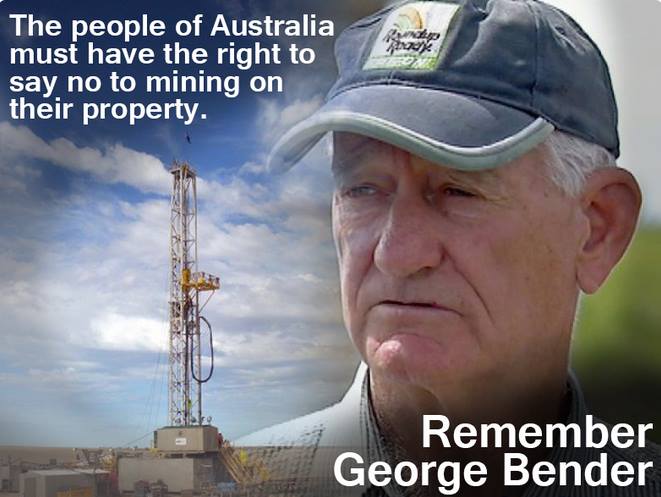

Clean Air For NSW Consultation Paper
Have your say on how we can improve air quality across NSWThe Clean Air for NSW Consultation Paper presents a proposed approach and actions for government to meet its goal of improving average air quality results across NSW. The Environment Protection Authority (EPA) is seeking community and stakeholder feedback on whether you think NSW is proposing the right actions to improve air quality.
Your submission can assist us in finalising Clean Air for NSW and improving air quality and public health.
Key questions to consider:- Do you have any comments on the proposed actions in the Clean Air for NSW Consultation Paper to improve air quality? (Please use headings to identify each action)
- Are there other issues and actions that Clean Air for NSW should cover?
- How do you want to be informed about and involved in improving air quality?
- Do you have any other comments or ideas on improving air quality in NSW?
Please include headings for specific actions where appropriate throughout your submission.
Make sure you include the following information at the top of your submission:- First name
- Last name
- Organisation you represent (if applicable)
- Email address
- Phone number
- Postcode
Submit your feedback by Friday 20 January 2017 Online
Email your comments to:
Post your submission to:
EPA Air PolicyPO Box A290Sydney South, NSW 1232
The EPA is committed to transparent processes and open access to information. The EPA may draw upon the contents of the submissions and quote from them or refer to them in publications. The EPA will treat the submission as public unless you indicate that you wish your submission to remain confidential.
The EPA will email an acknowledgment of submissions received by email within 72 hours of receipt.
- Do you have any comments on the proposed actions in the Clean Air for NSW Consultation Paper to improve air quality? (Please use headings to identify each action)
- Are there other issues and actions that Clean Air for NSW should cover?
- How do you want to be informed about and involved in improving air quality?
- Do you have any other comments or ideas on improving air quality in NSW?
- First name
- Last name
- Organisation you represent (if applicable)
- Email address
- Phone number
- Postcode
Nature In Cities: Can Urban Planners Enhance Human Well-Being Using Biodiversity?
The University of Sydney is conducting a survey on how diverse communities interact with components of nature and biodiversity in cities, and how this affects their well-being.
The results will help urban planners to prioritise specific elements of greenspace in order to maximise the community’s benefit.
Please take a short survey to help with this research.Survey at: https://www.surveymonkey.com/r/CFT77F5
Nature Conservancy Writing Prize 2017
Enter The Nature Conservancy Australia Nature Writing Prize today!Calling all writers! The Nature Conservancy Australia is delighted to open the fourth biennial Nature Writing Prize.
$5,000 will be awarded to an essay of between 3,000 and 5,000 words in the genre of ‘Writing of Place’. The prize will go to an Australian writer whose entry is judged to be of the highest literary merit and which best explores his or her relationship and interaction with some aspect of the Australian landscape. The competition’s judges are award-winning journalist, author and editor Jo Chandler and novelist and critic James Bradley. The winning entry will be published in Griffith Review online as a multimedia essay.
The prize has been made possible thanks to a generous donation from the McLean Foundation, which promotes and celebrates the art of nature writing in Australia.
The deadline for submissions is January 27, 2017. Click here to learn more about the prize and review the terms and conditions of entry.
Parliamentary Inquiry Into Freedom Of Speech
Knowing Risk Factors Could Help Catch Melanomas
Mobile Health Interventions: No Silver Bullet For Diabetes Patients: Study
Microscopic Sensor For More Precise Radiology Treatments
National Cervical Cancer Awareness Week
Remarkable Efforts Recognised At The 10th National Disability Awards
ACCC Raises Concerns About Supermarket Delisting Notices
Australia Exports Baseball Bats To America
Search For ET Underway With CSIRO'S Parkes Radio Telescope
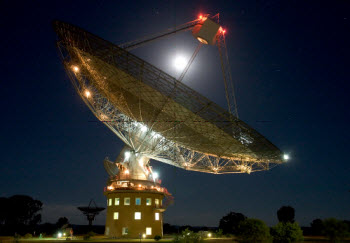
New Life For Sydney's Fish Market
Life Took Hold On Land 300 Million Years Earlier Than Thought
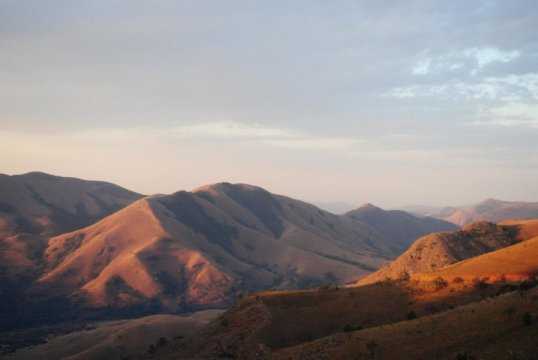
Building Burnie C.1927
Disclaimer: These articles are not intended to provide medical advice, diagnosis or treatment. Views expressed here do not necessarily reflect those of Pittwater Online News or its staff.
Design Competition For Missing Middle Housing
Horrors Of War Continued At Home For Anzacs
ACCC Releases Issues Paper For Inquiry Into The Australian Dairy Industry
2016 Prime Minister's Literary Awards Winners
Developing The Next Generation Of Cyber Security Professionals
Deng Adut Named 2017 NSW Australian Of The Year
NAIDOC 2017 To Celebrate Indigenous Languages
Pets Of All Types Take Over The National Portrait Gallery
National Disability And Carers Advisory Council Announced
$1 Billion Of Pacific Highway Works Between Woolgoolga And Ballina Put To Tender
George Eastman Image Collection Goes Online
